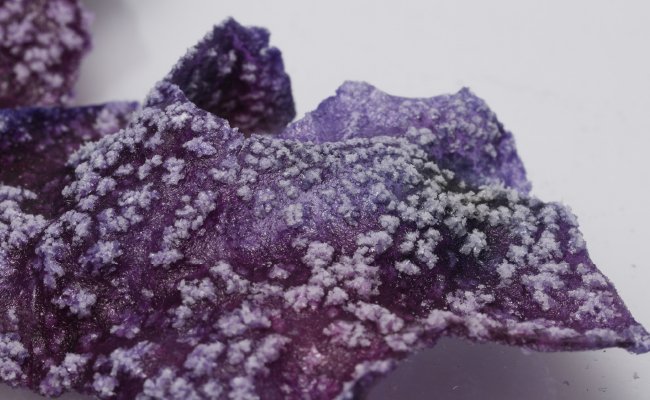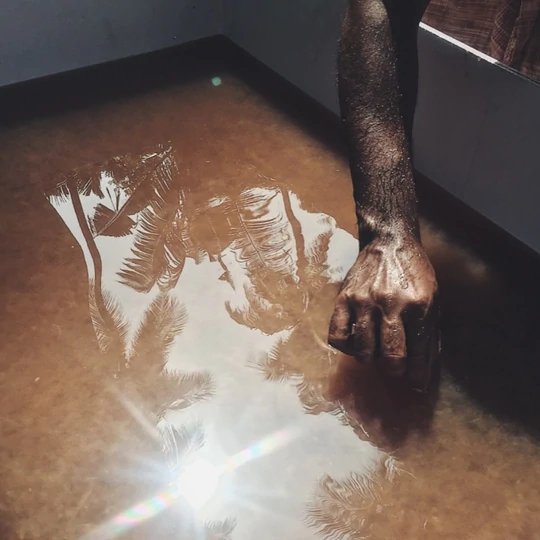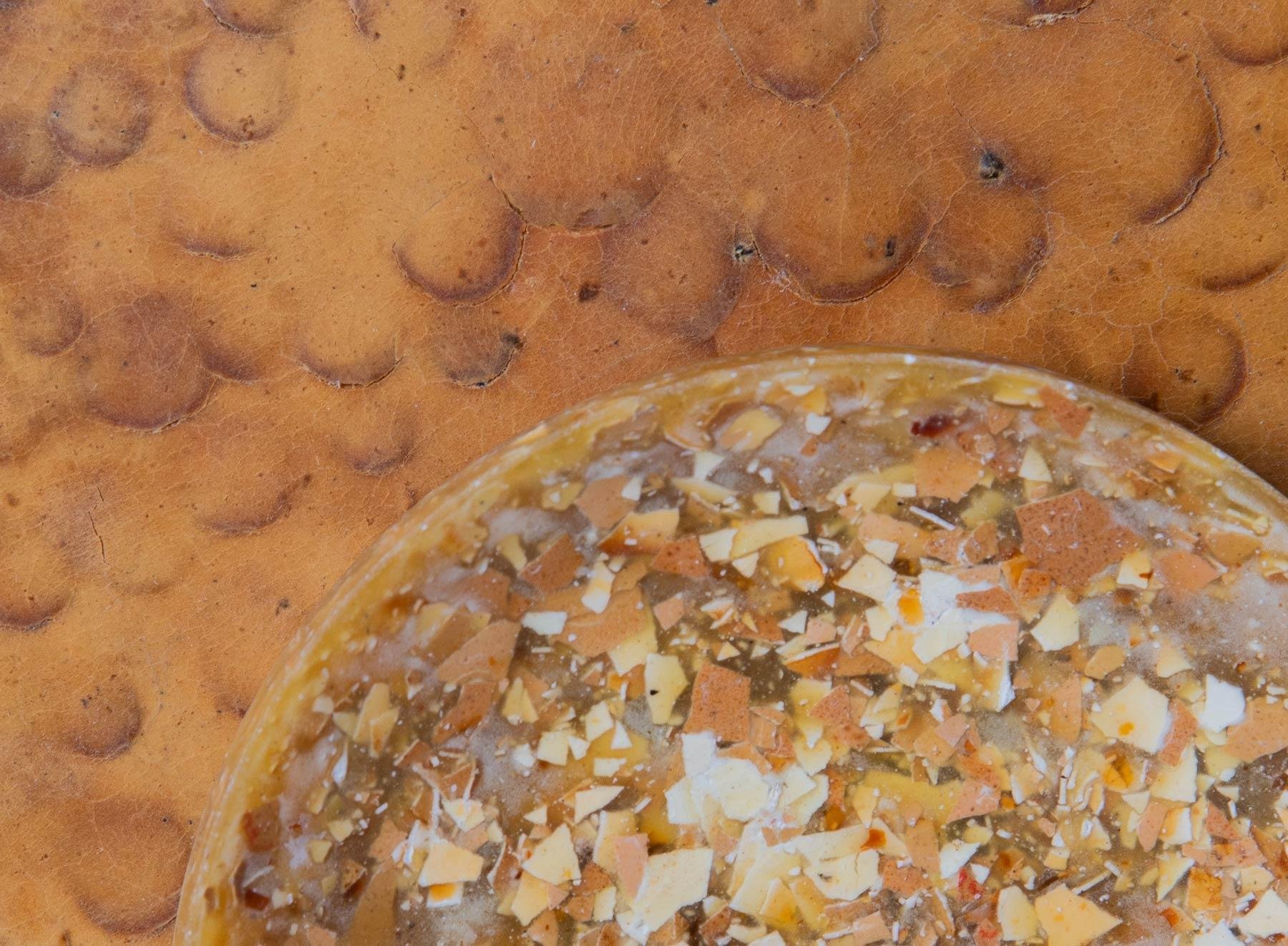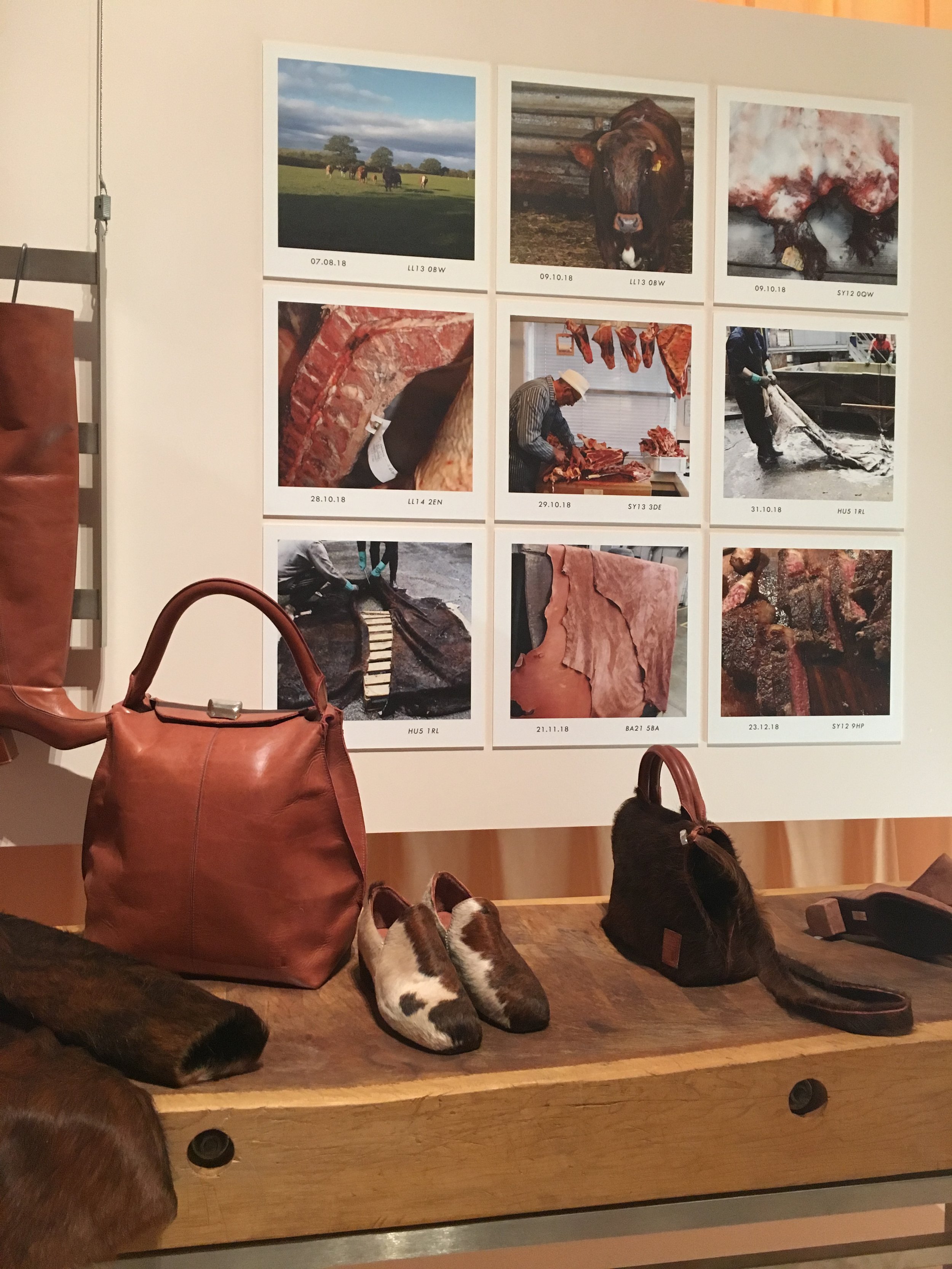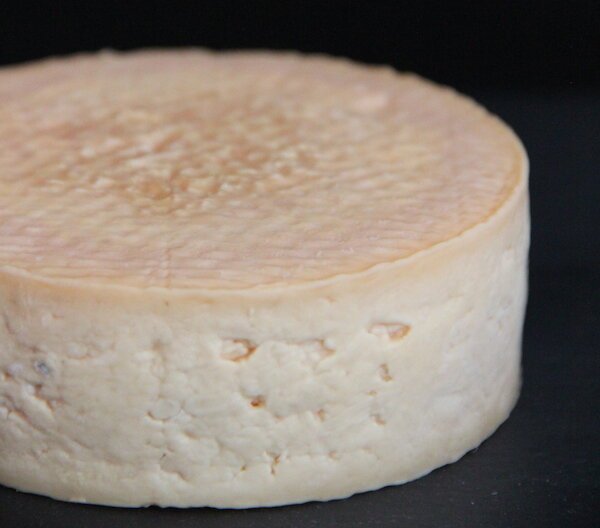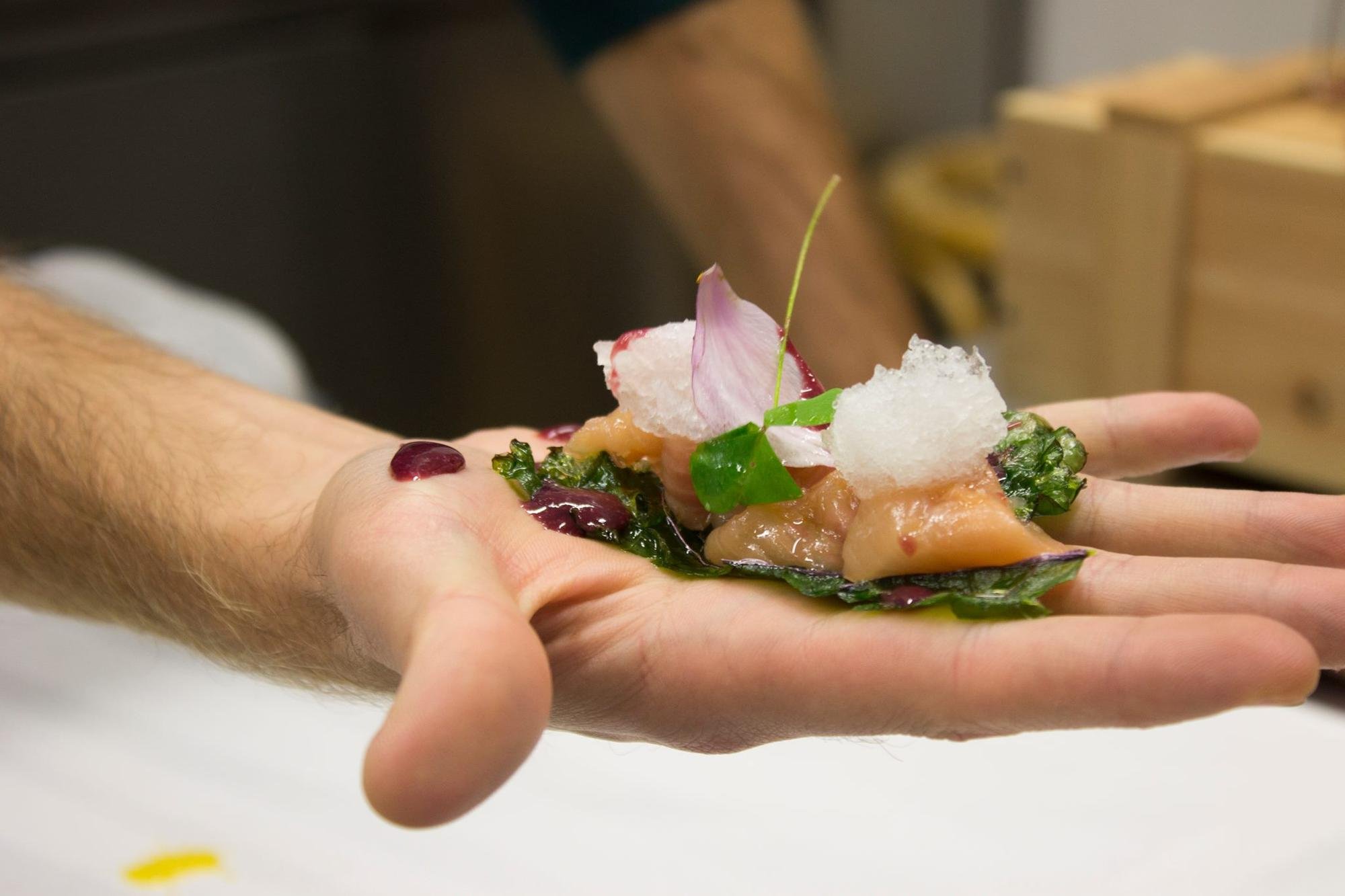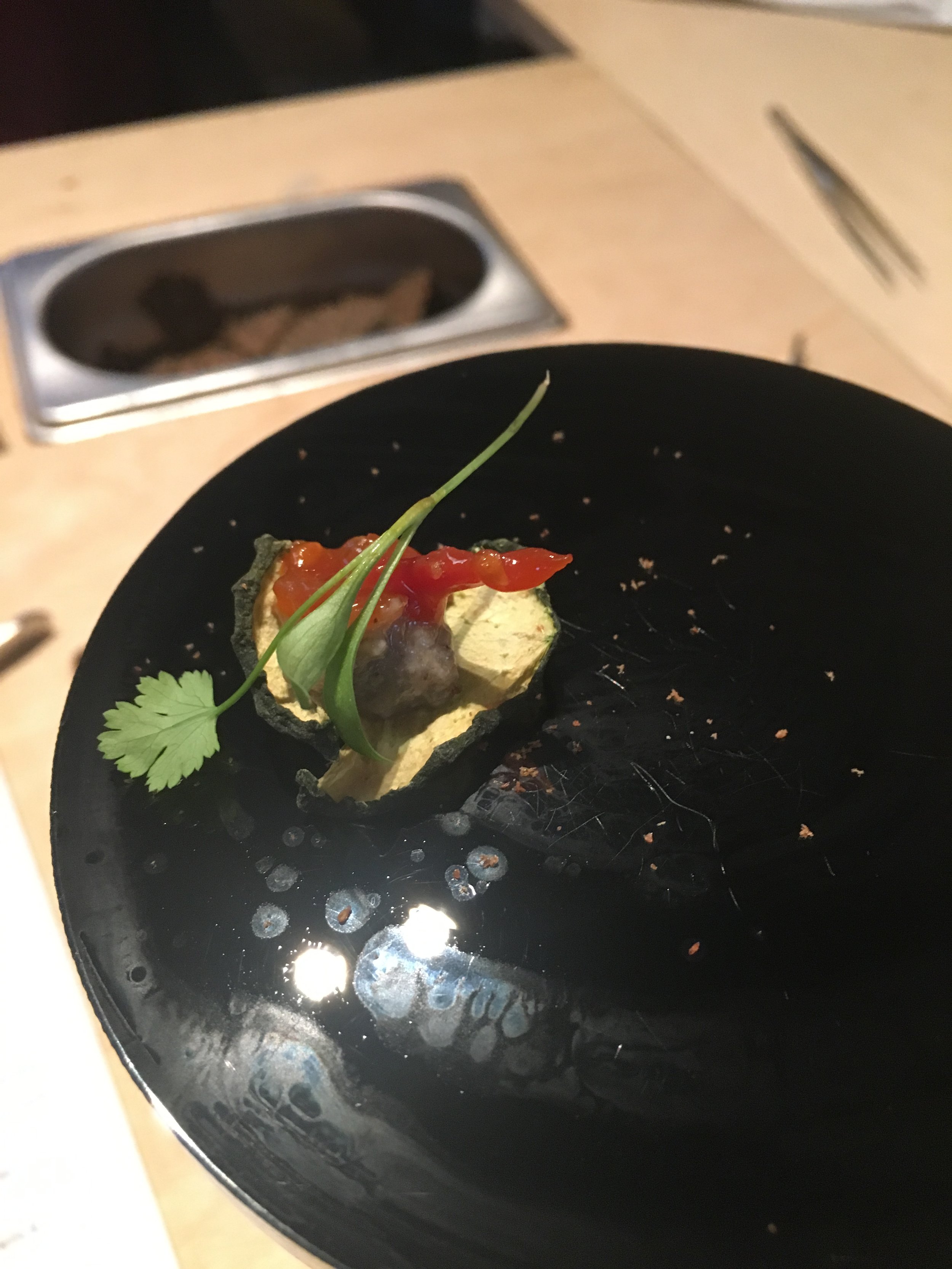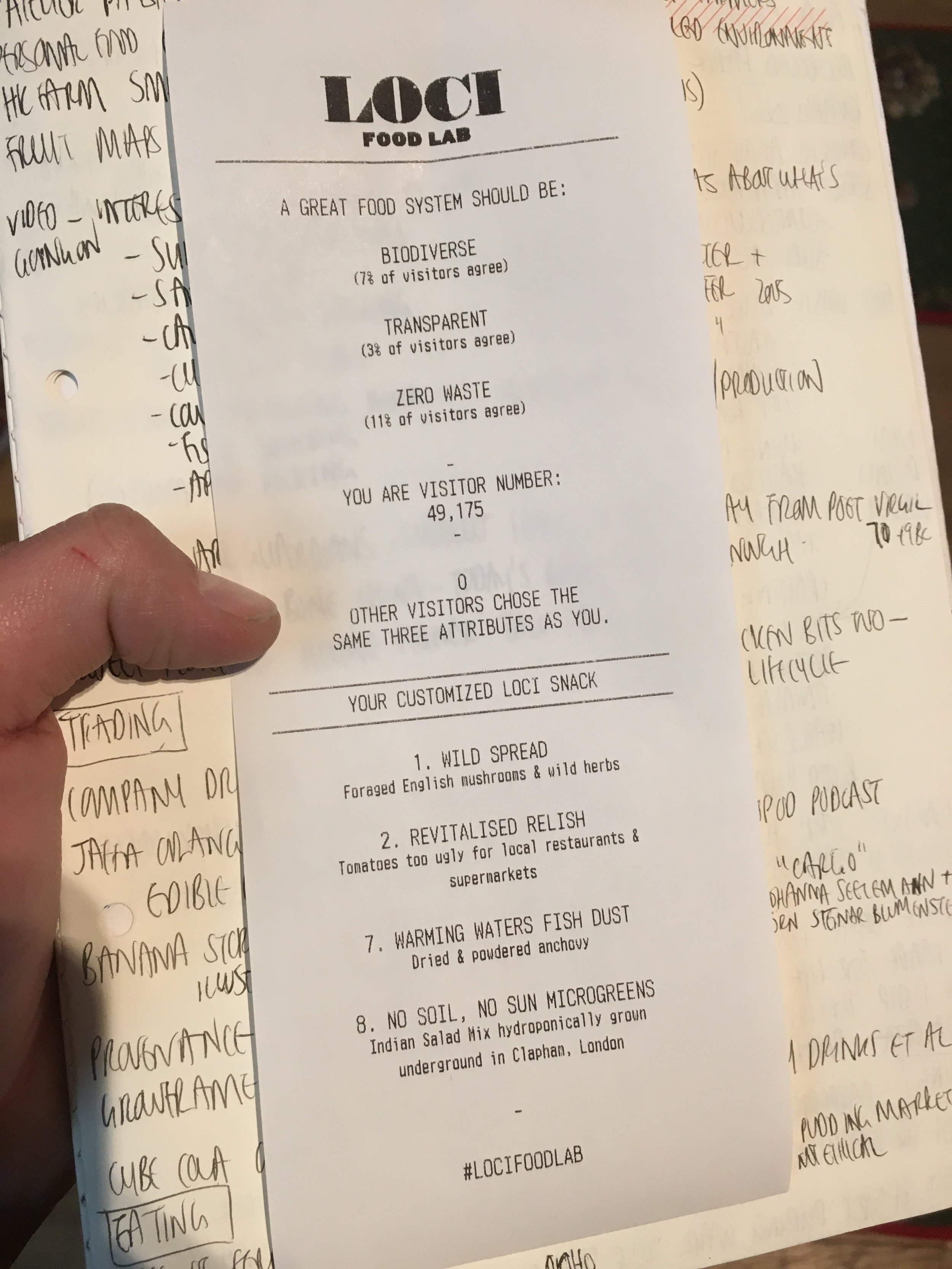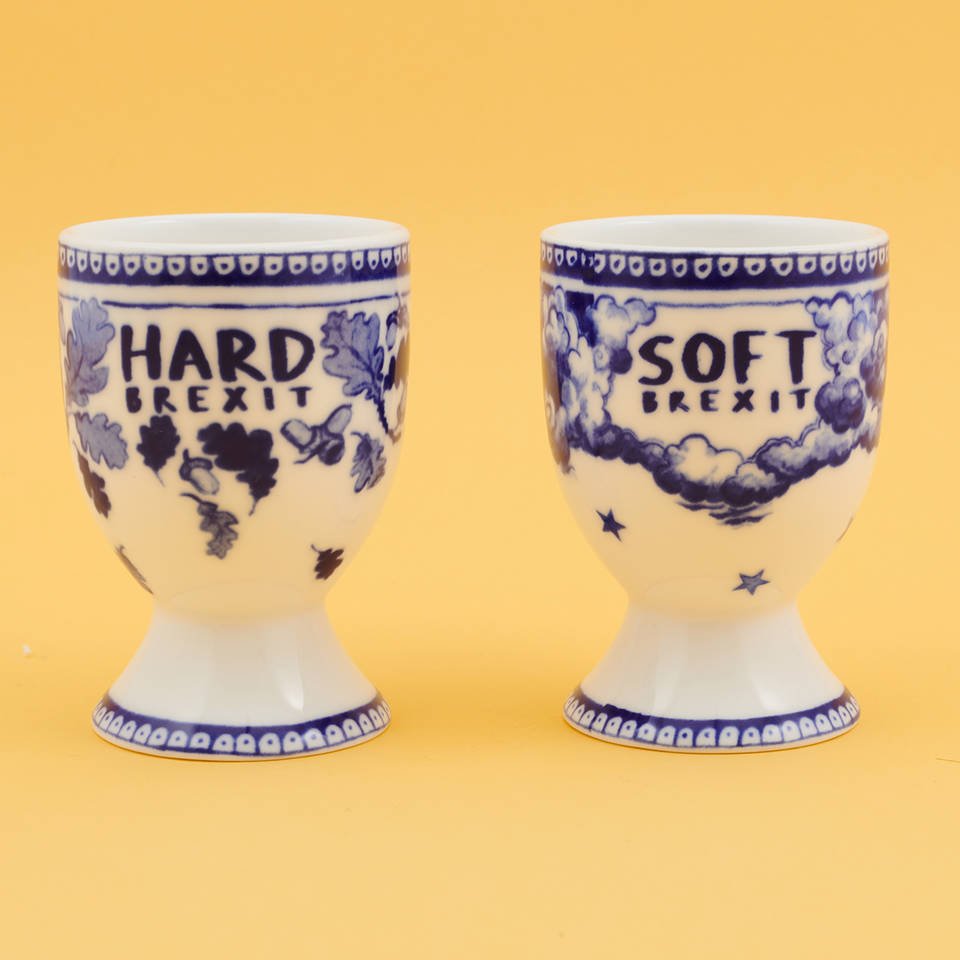Rethinking waste (food + materials).
The Food: Bigger Than The Plate exhibition at the V&A Museum in 2019, showcased what they called “current experiments” in the food system. With works both speculative and commerical, the exhibit addressed what us as viewers - as consumers - think we know (knew), and what additional education was required to understand the challenges of the food supply chain. Though a hugely diverse curation of sectors within food - e.g. SaaS, socio-economic legislation, debate around veganism - it was materials-focussed. In this series of posts I take you through pretty much all of the works exhibited to explore what has changed (or not) in the almost 3 years since.
First up, I’ll highlight the opening section of the exhibition: Composting, and then finish up with Eating. Additional articles on Farming and Trading will follow under the banner of Rethinking Waste. Each section was too in-depth to lump together, and ‘composting’ in particular was incredibly dense with material innovations, sitting as a conversation in itself. However, speaking about this without considering our own human composting system would be remiss, and so I wanted to include ‘eating’ here to bring the system back around. Ok, here we go.
Composting.
The first section of the exhibition concerned the circular system of food. Or, as circular as it can be in a “clean” human environment, with composting being a rather manual take on the usually natural cycle found with animals. In fact, one of the opening statements regarded our disconnect with food, people and land simply because we have a sewage system. Does that mean then, that countries without such efficient tunnels, are less disconnected? I’ve personally split up the highlighted projects in to “self-sufficiency” and “no such thing as away”, with further splits into “food waste” and “biomimicry” to distinguish the mission and raw materials of each initiative.
Self-sufficiency.
The Street Farm Collective.
The Street Farm Collective house, built in 1972 by architecture student Graham Caine and his friends Bruce Haggart and Peter Crump, was an off grid, radically self-sufficient house using human waste, with energy produced via human systems ensuring Caine felt he couldn’t ever leave.
Diagram of Basic Inter-dependencies), Survival Scrapbook Volume 5, 1973
Nienke Hoogvliet (Waterschatten).
Used toilet paper (cellulose) can be captured using fine sieve installations, where it can be repurposed, rather than being burned as is most common, and the subsequent sewage wastewater requires less energy to clean too. Every year 180,000 tons of toilet paper is flushed down the toilets of the Netherlands, which means 180,000 trees. Studio Nienke Hoogvliet was invited by the Dutch Water Authorities to design products with this material to bring a more positive association of this material into the home. Though only the vessels - Waterschatten - were on show at the FOOD exhibit, the studio have developed 8 materials that can be created from captured toilet paper.
Sinae Kim (Urine Ware).
Why does urine matter? There was a time when urine was used for planting, natural dyeing, medicine, teeth whitening and leather tanning. In response to this question, material researcher Sinae Kim created Urine Ware, a series of vessels inspired by the shape of the human bladder and laboratory flasks that utilises actual urine to create the ceramic glaze. Apparently, minerals found in urine are able to offer a much more natural alternative to the metal oxide glazes frequently found in ceramics.
Museo Della Merda (Merdacotta).
Translating directly in Italian as ‘cow shit’, Merdacotta is a lighter and more cold resilient terracotta replacement that is created using mostly cow dung, then mixed with Tuscan clay, straw and farm waste, in variable quantities for the multitude of products. The methane and urea, which is what makes poo smell, are extracted, making the dung odourless. Museo Della Merda produce tiles, vases, flowerpots, benches, mugs and dishes - with the fake toilet shape used as a speculative design at the FOOD exhibition. Though manure has a use of its own, large farms cannot utilise enough of it, and so farmer Gianantonio Locatelli worked with a local designer to do something more productive. Being fully industrialised now (at least it seems to be), this is a wonderful example of reshoring local production and raw materials.
Daily Dump.
Daily Dump are an Indian design-led company that have been imagining and developing alternative scenarios to change behaviours, specifically around daily waste i.e. composting in India, in order to create cleaner spaces, reduce waste, increase material recovery and enable better livelihoods. They produce a variety of traditional Kambha and Mota pots to provide layering compost systems for small homes and flats, so embedding the ease with which composting can be done.
Images: 1. Nienke Hoogvliet’s Waterschatten vessels; 2. Sinae Kim’s Urine Ware; 3. Museo Della Merda’s selection of Merdacotta products; 4. Daily' Dump’s home composting pots.
No such thing as away.
The developing designer these days is questioning their role in creating waste. Even when utilising existing waste streams, there is no such thing as “away”. And if we take the adage that nature isn’t wasteful, what can we do to design in sympathy with and empathy for the natural systems we are part of? There are many reasons why food is wasted: best before dates, plastic packaging, eating out of season, lack of knowledge about the produce, promotional offers, supermarket policies and decision-making, public uncertainty… Tristram Stuart’s Waste: Uncovering The Global Food Scandal is one book I highly recommend to appreciate this complexity.
In this exhibition, there were cool projects that explored weird food waste streams, from congealed blood to urine, to the more acceptable coffee grounds and algae. Here I’ll highlight the ones that were of particular interest to me.
The main concern I have with utilising food waste, is that it’s another bandage to say that it’s ok to continue to waste because there’s a use for it. Only true waste streams - so ones that will cause further damage if not used, or have no commercial value, should in my opinion be scaled. If we take cues from nature, then any “waste” streams from food production should always have a place in composting anyway. The benefit for designers is that you can make an interesting - and hopefully functional - product before it is degraded, and therefore this chain holds additional value. Yet, as soon as you start commodifying anything, it becomes important economically and the system shifts to placing capital, rather than environmental or social benefit, as top of the hierarchy. And additionally, where is the waste even coming from? Are you shipping it across the world so negating any benefit you’re creating? How can designers create a product that utilises something that would otherwise have limited value, and supports a local, regenerative model over global growth with its own issues?
I’ve split this segment then into “food waste” and “biomimicry”. The food waste projects are focussed on utilising an actual waste stream or byproduct, while the biomimicry projects are utilising existing systems to create something that benefits from the organism’s properties.
Biomimicry.
Alice Potts.
Biomaterial designer Alice Potts is now focussing a lot on sweat crystal works, which are dear to me, but showcased specifically bioplastic samples at the FOOD exhibition. During my MA I started growing crystals that I then embroidered onto a garment, but utilising alum potash (as I was using this anyway for a dye mordant). I had been considering the epheremality of crystals - as soon as they’re exposed to water, they disappear. Making use of sweat to create crystals gives a frankly disgusting connection - people don’t like sweat, and yet it’s a function of survival, washing it away at the earliest opportunity. Here instead it is highlighted as beautiful, same as the unsaleable animal bones.
Images: 1. bioplastic sample of animal bones (AP-012-624-0240-014); 2. red cabbage bioplastic and sweat crystals (AP-012-624-0240-011); 3. bioplastic weave (AP-012-624-0240-049); 4. food waste sample in modular construction (AP-0824-FWPM-026)
Vlasta Kubosova and Miroslav Kral.
These two maker-researchers head up the Crafting Plastics Studio. At the Food: Bigger Than The Plate exhibition, they showcased a wall of Nuatan®, a material made from “100% plant-based biopolymers produced out of plant-based renewable resources” that can be used in all sorts of plastic industry technologies such as injection moulding, 3D printing, extruding, CNC milling, laser cutting, heat pressing, heat blowing and vacuum forming. The studio has made products including eyeglass frames, vases and tableware. So, it’s not going to radically disrupt current plastic consumption, but perhaps with further development could have wider applications, maybe more for sectors like health.
Biohm.
A material science and research company, Biohm focus on byproducts of the food waste sector, including mycelium. It’s unclear what Orb [organic refuse biocompound] is made from particularly, but they say,
“Orb is manufactured from difficult to reuse or recycle by-products / sourcing waste by-products from the food production or agricultural sectors and processing it into a homogenous filler, which is bound together with our unique and completely organic binder to form an affordable and sustainable replacement for wood-based sheet materials.”
They so far create interior and home products like this lampshade shown below, with the mycelium segment being used for insulation panels. Again, not a dramatic system change, and not much seems to have developed since the exhibition in 2019, but a cool material anyway - if it can be commercialised, because that’s how they’ll grow.
Silvio Tinello (Cyclebank).
Industrial designer Silvio Tinello’s Cyclebank is a mycelium and yerba mate piggy bank. It seems that the yerba mate growing and havesting is done in co-operation with Argentinian locals, but it’s another place with limited information. I liked the cute idea of being able to break it open without remorse, but otherwise pretty pointless products.
Images: 1-2. Crafting Plastic’s Nuatan® products. 3-4. Biohm’s Orb “wood” sheets and lampshade; 5. 1. Silvio Tinello’s Cyclebank.
Food waste.
Chip[s] Board.
Material R&D company Chip[s] Board create bio-plastics and bio-plastic composites for products including buttons and eyeglass frames, using the trimmings and non-edible potato pieces from the chipping industry, working with partners such as McCain’s to obtain raw material. Another company not massively having a swift uptake, so what’s the deal - is it funding or public comfort?
Ludovica Cantarelli (Wine Matters).
“Every year, 50 million hectoliters of wine is produced in Italy and almost 2 million tonnes of solid waste as branches, stems, skins and vine have to be disposed of or, as is more commonly done, burnt on site. This produces a significant amount of CO2 but the waste could instead become a significant and valuable raw material for individual vineyards.”
I wrote in my notes about this element of the FOOD exhibition, “wine rest = bit pointless”. The final product for the Wine Matters project from Ludovica Cantarelli is a paper label and wine bottle rest made from this waste stream of stems, branches and skins. But, I guess, not all materials need to have a massive system change as I’m being critical of, and instead can be a way to showcase value and craft.
Images: 1-2. Potato trimmings waste stream to create the Parblex bioplastic and biocomposite board from Chip[s] Board; 3-4. The craft process of transforming wine industry waste streams into a paper label and wine bottle rest for this family vineyard in Italy.
Julian Nachtigall-Lechner (Kaffeform).
Kaffeform have been developing their unique product since 2009, and after five years, landed on diverting old coffee and beechwood scraps from landfills to “upcycle” them into material compositions used for coffee cups. I like the connection between what the waste stream is and the new product - unlike PET bottles into clothing (though, frankly, there’s limited connection anyway with where plastic originates). However, as the product wouldn’t have integrity if made purely from coffee, of course there are secret “renewable, plant-derived materials and bio-based polymers” included in the blend. And unfortuantely the brand focus on the product rather than the process, as continually seems to be the case with material R&D companies. it’s not even clear from this image what “old coffee” even is?
Tessa Silva (Protein Bowl).
British-Brazilian visual artist Tessa Silva has been exploring ‘Feminised Protein’ since 2015, a body of work that investigates craft as a tool to explore the relationship between humans and animals, particularly the female mammals’ role in a patriarchal social and cultural structure i.e. a dairy cow’s reproductive cycle under the common care of male farmers. According to Tessa’s research, milk is a historic raw material other than for drinking and eating, with Tudor houses have chalk and sour milk flooring. The Protein Bowl was shown at the FOOD exhibit, but the raw material vessels are so much more interesting; I appreciate that this is a visual work addressing a controversial subject, rather than a commodification. All too often businesses will form to “green” an issue via further consumption - like Kaffeform.
Images: 1-2. Kaffeform’s “old coffee” raw material and coffee cup blended using other biopolymers. 3-4. Tessa Silva’s Feminised Protein work with handful of raw milk (or curds) and protein vessel.
Malai.
The duo behind Malai are product designer Susmith and material researcher Zuzana, who developed a more aesthetically and fashion-forward material using the traditional bacterial-cellulose growth process used to create the popular Filipino Nata de Coco (coconut gel).
“We work alongside Southern India’s coconut farmers and processing units who find themselves with much ‘waste’ coconut water after they’ve removed the harvest of white flesh from inside the mature coconuts. Normally this waste water would be released into the drainage system, but this in itself causes pollution of water and the soil to become acidified. Every day a small coconut processing unit disposes of up to 4000 litres of this water per day.”
The information presented on the site showcases a pleasure in storytelling for the sake of development and care of craftsmanship, rather than to further just a consumerist offering. They have a wide range of materials now for different applications, used for commercial products in footwear, interiors and accessories, and still with a connection to the natural origin through their explanation of material wear and care procedures. For me, this product does capture a waste stream, provides local employment, sympathy for traditional knowledge, and education on natural/composite materials. Thanks Malai!
Images: 1-4. Malai material process from coconut raw material, through fermentation, to sheet creation, to final naturally dyed material.
Kosuke Araki (Anima).
Food Waste Ware was a 2013 project that took food waste from London food markets and food shops, and using the carbonised vegetable waste, plus animal glue extracted from a meat shop’s waste, turned it into tableware. Kosuke' Araki’s follow on in 2018, Anima, showcased at the FOOD exhibition, is the same as previous work yet painted with Japanese laquer (urushi). This project brings to life the urushi craft, allowing the food waste to become valuable in a different state.
Basse Stittgen (Blood Related).
Basse Stittgen’s Blood Related objects on show at the FOOD exhibit looked heavy and dramatic, and so similar to Kosuke Araki’s Anima pieces. And yet, by being created using blood, they hold a heavier resonance in the conversation surrounding waste. There are something like 300 commercial value-added products from the cattle industry (source: Leather UK), and though there are plentiful additional useable waste streams within vegetable production, the life here is not questioned.
“The very real narrative of cowblood as a by-product and waste stream remains untold. The slaughterhouse industry is one of the most resource intensive in the world, yet it remains almost invisible - this disconnection makes it difficult to create a common ground to talk about the ethics of production and consumption. The work offers a platform for confrontation and reflection regarding our relation towards animals.”
An additional project from Studio Basse Stittgen is How Do You Like Your Eggs?, damaged and b-stock egg whites and shells are thermoformed into bio-plastic cups with zero additives.
Images: 1. Kosuke Araki, Anima; 2. Kosuke Araki, Food Waste Ware; 3. Basse Stittgen, Blood Related; 4. Basse Stittgen, How Do You Like Your Eggs?
Grocycle.
GroCycle's Urban Mushroom Farm installation in the FOOD exhibit illustrated the idea of a circular economy by using waste coffee grounds, including grounds from the V&A Benugo Café, to grow oyster mushrooms. Once fully grown, they were harvested and taken back into the café. It was a large installation with a practical insight into how mushrooms are grown and harvested on a commercial scale, and even better, how it could be done utilising unwanted substrates. As someone who has grown mushrooms on logs, it’s a little unnerving to be controlling nature (despite the fact that planting veg is the same thing) so this segment showcased a lot of what the public wouldn’t know because mushrooms grow in forests, right? Learn about growing mushrooms directly from GroCycle and buy your own kit.
Totomoxtle.
Developed by designer Fernando Laposse, Totomoxtle is a new veneer material made with husks of heirloom Mexican corn, that range from deep purples, to soft creams, showcasing the wealth of diversity of the native corns of Mexico which are naturally colourful. However, international trade agreements, aggressive use of herbicides and pesticides, and the influx of highly modified foreign seeds have decimated the practice of growing native corn across the country and so it isn’t profitable to grow them these days. Totomoxtle then is also about the preservation of traditional agricultural practices, local cultures and indigenous knowledge, income for farmers, and a biodiversity of crop essential to food security and health.
Tototmoxtle operates in partnership with the community of Tonahuixtla, a small village of Mixtec farmers and herders in the state of Puebla, and Laposse has been working with a group of families from there since 2016. With the support of CIMMYT, the world’s largest corn seed bank, they have been slowly reintroducing native seeds in the village and returning to traditional agriculture. Fernando Laposse’s other projects also focus on one specific material, and they are divine. Simple-looking, yet with deep social commentary.
Images: 1. GroCycle oyster mushrooms in plastic bags filled with waste coffee grounds and straw, 2016; 2. Close up on the V&A installation from GroCycle (image credit Women In The Food Industry); 3. Fernando Laposse’s Totomoxtle heirloom corn on finished corn husk veneer; 4. Lucy with her harvested corn.
Alice V. Robinson (Bullock 374).
Designer, maker and researcher Alice Robinson presented a leathergoods accessories collection for the FOOD: Bigger Than The Plate exhibition using components and materials only from one source: a cow. Bullock 374 was the follow on to Sheep 11458, both explorative collections into traceability, food-farming-fibre systems, and value. With a personal heritage of farming, Alice was able to purchase a longhorn cattle from her father’s own steer. For this exhibition, grotesque photographs of abbatoir processes were the backdrop to sleek leathergoods, and yet for my visitor perspective - even as a vegetarian - it was eye-opening, and frankly impressive that someone had been able to fully trace, document and use a whole animal. The meat cuts were sold or otherwise used for a V&A Members’ dinner as part of the exhibition (‘Farm, Fashion, Fork: Bullock 374’), and leathergoods created from various pieces of the hide, bones and other byproducts.
Alice is now working on Grady + Robinson with regenerative entrepreneur Sara Grady to bring a fully traceable leather supply chain to the UK. Despite growing disgust over cattle farming, the duo (along with support from the likes of Leather UK, The Sustainable Food Trust and The Savory Institute) are showing that there is a benefit to having a regenerative, local and transparent meat industry.
Images: 1. Collection of goods created for and from Bullock 374; 2. Skives of the Bullock 374 hide; 3. Alice presenting where the fabric pieces were taken from on the hides; 4. Grady + Robinson at work with salted hides (Credit: @emperorofhoxton).
Selection of photos of the exhibition in situ.
Images (from left to right).
Row 1: 1. Kaffeform, Cyclebank and Malai; 2. This Is Urine, Protein Bowl; 3. Piñatex (Ananas Anam) production process video; 4. Nuatan® bioplastic options; 5. Kosuke Araki’s Anima.
Row 2: 1. Kaffeform in production; 2. Totomoxtle raw material and veneers; 3. GroCycle’s oyster mushroom bags; 4. Alice Robinson leather skives and pattern cutting for Bullock 374; 5. Alice Robinson images of Bullock 374 slaughter and leather production with finished leathergoods.
Eating.
Eating is an act of consumption, and yet, even here, there is no away. All living organisms create waste in some way, but it’s the action of what we and the system we’re in do with this waste that determines if it is in fact “waste” or not. The sewage system we have is a key player in the disconnect of humans and waste. Nature isn’t wasteful, and if we work with nature’s knowledge, we are also able to be self-sufficient - we are, actually, nature too. We are rightfully disgusted by our waste - it causes so much disease, though in a controlled system, it can be beneficial for all.
The projects above mostly come from food sources, or otherwise plants and fungi, and will in the right environment fully biodegrade. In the Global North, biodegradation rarely occurs because all of our waste is treated as sewage, left in landfill to rot, or incinerated for biofuel. As soon as you start using a composting system, you can visualise the amounts of waste and understand where the system needs amending.
For this closing section of the FOOD: Bigger Than The Plate exhibition, the curators ask us to consider if we still play with our food. Without experimentation or risk-taking, are we disconnected?
“When you sit down to eat, you are engaging with something far more complex than simply a meal waiting to be tasted and digested. The food we eat connects us every day to the internal workings of our own bodies, to other people in our communities and in wider society, to the economy, to global politics and to the natureal world. When we eat, we taste the world around us, entering into a relationship with plantsm, animals, and even the microbes we collaborate with to create some of our tastiest, most celebrated foods. And in the act of eating we impact on more than just our own well-being.” ~ Food: Bigger Than The Plate, Catherine Flood and May Rosenthal Sloan
Christina Agapakis and Sissel Tolaas (Selfmade).
Christina Agapakis and Sissel Tolaas developed Selfmade, a set of cultured cheeses from the microbial samples taken from human skin as part of a wider interdisciplinary research project ‘Synthetic Aesthetics’.
Grizedale Arts (House Of Ferment).
Artist and home fermenter Karen Guthrie collaborated with Grizedale Arts to build a travelling ferment and preservation larder, House Of Ferment, that established the tastes of bacteria of the Lake District, UK, yet must have developed with each new location (because that’s what bacteria does).
John O’Shea (Black Market Pudding).
Wondering whether there could be a vegetarian market for black pudding if the blood came from a live pig rather than a dead one, in 2011 artist John O’Shea started developing a black pudding market , taking the concept and production to various countries. There were legal implications and so was received with vaying degrees of success, and therefore is a ‘black market’ pudding.
Giulia Soldati (Contatto Experience).
Sensory perception of food (apart from taste) can make us immediately discard something before it gets in our mouth. I know this to be true from a dark dining experience (Dans le Noir, Hoxton), and simply otherwise because of smells I don’t like. One project, Contatto Experience, explores the awkwardness of eating with one’s hands. We eat snacks this way, but not main meals, at least in the Global North. How would this affect our enjoyment and perception of the food?
Charles Michel and Andreas Fabian.
Michel / Fabian started developing a series of eating utensils to explore this tool as an extension of our hands when eating. One such object, Hand Bowl Dressed In Fur, invites the user to engage with the origin of the meal they are eating: the fur bowl is filled with a wild rabbit stew, and the utensils are also covered in fur. In a similar vein, Alice Robinson’s Bullock 374 meal (mentioned above) was presented with images of the cow the meal came from so as to provoke a connection.
Notpla (Ooho).
We are habitual, and one material that needs to go is plastic, especially the single use variety. I ran London Marathon the first year that Ooho was handed out (2019), though unfortunately, it was at the end of the run and didn’t want to try something new with the last push to come. When something feels like plastic, it isn’t engrained to then go and stuff it in our mouth. Today, Notpla has so many more applications than a water or Lucozade pouch, with fun cocktails, delicate oils, and tea now available in edible and water soluble sachets. But, we have to get over our habits and experiment with what we know.
Images: 1. Selfmade cheese; 2. House Of Ferment at the ArtBoom Krakow installation (credit: ArtBoom); 3. John O’Shea’s Black Market Pudding; 4. Contatto Experience at Koiné Restaurant; 5. Michel / Fabian ‘Hand Bowl Dressed In Fur’; 6. Notpla’s Ooho Lucozade pouch at London Marathon.
Loci Food Lab.
At the very end of the exhibition, you are presented with a bar where you can pick up a canapé. First you must input some personality profiling, and then you are printed a receipt with the ingredients of your associated meal. The ingredients used were all from a local bioregion - apparently English Lowlands Beech Forests for South Kensington. I selected ZERO WASTE, BIODIVERSE and TRANSPARENT as my “great food system” traits.
Crockery.
I can’t part without some final images of the final pieces of the exhibition: crockery. I know from my own eating that crockery plays a role in how I enjoy food and drink; the dismay when you smash a favourite piece. But these candidly play in to the joke mug situation, or subvert traditional manufacturing.
Images: 1. Soft Brexit/Hard Brexit (Harriet Coles); 2. Human Trace Tableware shows the marks left by crockery producers. Workers wore gloves dipped in cobalt powder that left marks on the porcelain; 3. Foot and Mouth No. 5 (Paul Scott) subverts traditional English blue and white pottery with a depiction of the Foot and Mouth disease that struck the UK in 2001, resulting in the deaths of over 6 million cows and sheep.






